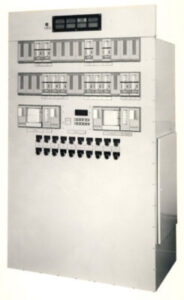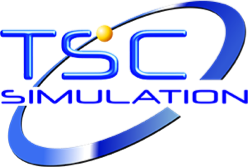Over 40 years since the first TSC Simulator

In 1979, BP Petroleum Development required a process control training aid to help train new local operators, particularly on the Gas Fractionation Train at the terminal. At that time, the TSC team were a part of a company that specialised in training equipment and were UK approved microprocessor application consultants. Over a 6-month period, the first ever process simulator based on a digital computer was developed, using chemical engineering expertise help from Aston University in Birmingham.
The unit was designed to look just like the actual control room panel, complete with the Kent Flexel controllers, indicators and pen recorders. An Intel 8085 single board computer with 32k EPROM memory used a Fortran program to run a mathematical model of the process. Linking to the indicators and controllers through a 5 – 20mA digital/analogue converter system, the simulator was used effectively to train both the commissioning team and then the control room staff on the operation of the de-propaniser column.
At the rear of the simulator cabinet, a fold- open panel allowed the instructor to enter up to 14 predefined faults into the model using a simple keypad and fault list. After a couple of years of successful operation, the unit was upgraded to enable alternative sets of EPROM memory to run simulated models of the de-ethaniser, or the overhead refrigerant compressor. It was to be another 5 years before the first graphics screens were to be used in a control room and TSC were invited to use this medium for their simulators. it was then another 10 years before the first use of Windows on a simple 386 PC for dynamic process simulation.
Over 40 years on, TSC remains at the forefront of technology for process simulation. Simulations of complete facilities, even full Oil and Gas Platforms can be run on standard Windows-based computers or delivered from Cloud Based web servers through AWS.
Now, TSC is a leading supplier of 3D plant visualisation interactively linked with the simulation models. These are true digital twins, the 3D sometimes generated using high resolution laser scanning for use in both engineering and training.


